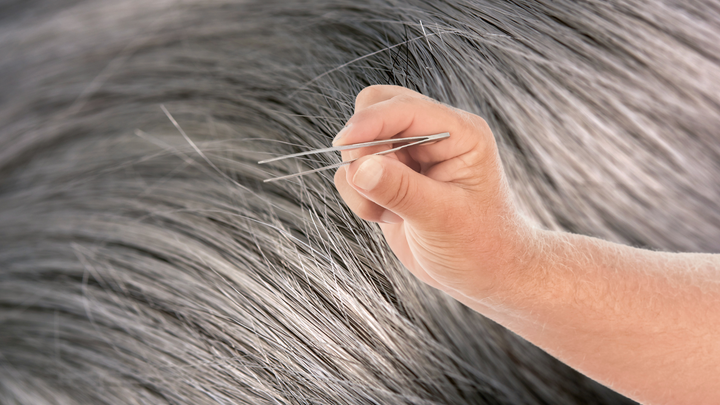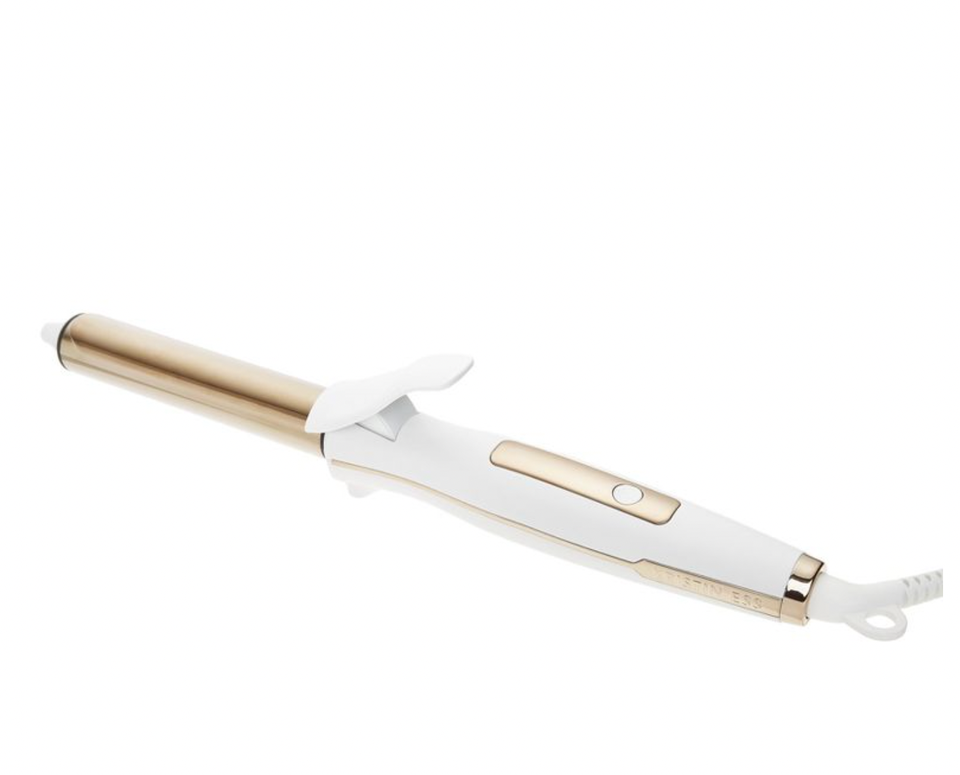
“Every time you pull out a gray hair, even more will grow in its place.” We’ve all heard that rumor, but is it true? Turns out, plucking those hairs isn’t a great idea, but not because you’ll end up with more of them.
“I wish this were true, because then we could help people with hair loss so easily,” said Mirza Batanovic, style director for professional hair care brand Eufora International. “But plucking one hair doesn’t make more grow, and it’s an idea that has no basis in science. It’s normal to lose up to 159 hairs a day, but basically they’re not connected in any way, so pulling one does not push more out of the scalp.”
So what exactly happens when you tug on a gray hair to make it go away, at least for a little while? According to Michael Van Clarke, a London hairstylist and founder of 3’’’More Inches Haircare, “The plucked hair whose life you shortened will rest and start its next growth cycle after about three months.”
“At each cycle after about age 20, the hair grows back a little thinner and stays around for a slightly shorter time. Cycles on the head average five years, and there are a limited number of growth cycles,” he said.
In addition to cutting short one of those cycles, you might be doing some real damage that could be hard to correct. “By plucking the hair, you may traumatize the hair follicle, which can lead to infection or even bald patches,” warned stylist Jennifer Korab. “You may be doing more harm than good.”
Then why do I pluck and still see more gray?
Gray hair is an inevitable part of aging, so you’re going to see more as time marches on. “Melanin is the pigment that gives color to the hair and skin,” explained stylist Helen Reavey, founder of hair care brand Act + Acre. “The number of pigment granules naturally begin to decrease as a person ages, usually between ages 28 and 40. The reason for this is that the melanocytes, the cells that produce melanin, begin to slow down and produce less.
“The hair actually isn’t gray, but is actually completely translucent. The ‘gray’ tone is actually down to the percentage of natural hair color left and mixed in between causing many different shades,” she said.
Your DNA and your life play a role in how quickly the gray appears, said Juan Serrano, marketing director for Developlus, Inc., the parent company of hair care brand Go Gray. “Your biological makeup and genetics determine when graying starts,” he said. “Stress can amplify or speed up the process.”
So more hairs aren’t coming because you plucked one — they’re showing up because time is passing. “I don’t believe revenge is built into nature,” Van Clarke explained. “But more gray is coming anyway, as this is the trajectory of life. If you make plucking a habit when less than 1% of the head is gray, you’ll have less hair to work with in a few years’ time, when 10% of the hairs are gray.”
What to do now
You can choose to embrace your gray or color it. A good first step is to talk to your stylist, said Cassie Siskovic, U.S. national artistic director for professional hair and skin care brand Alfaparf Milano Professional. “Consult with your stylist on a hair placement and palette design that embraces your gray,” she said. “It doesn’t even mean you need to transition fully to gray, but it may make your maintenance way easier. I honestly encourage clients to find easy, fun and on-trend ways to embrace gray hairs instead of fighting them.”
